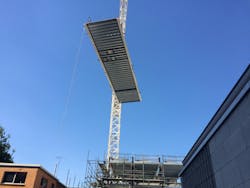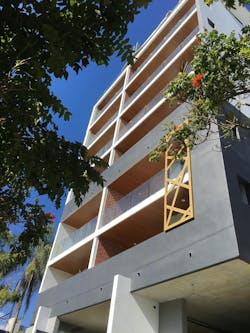Even if they know that offsite construction can deliver greater efficiency than traditional onsite construction, many owners and developers might not know how to make the most of offsite. They might add a few manufactured building components late in a project’s process, after the design is done.
PT Blink, an Australian construction and property technology company, wants to bring together all the players in offsite construction—including the owners and developers and the manufacturers, as well as the contractors and trades that can assemble the manufactured components onsite.
It’s much more than a matchmaking service. Founded in 2016, PT Blink serves as a technological enabler of the shift from traditional, onsite construction to offsite manufacturing and onsite assembly. Now, with backing from US-based property developer and operator Holland Partner Group (HPG), PT Blink is expanding into the US.
PT BLINK'S OFFSITE CONSTRUCTION METHODS
The benefits of offsite are significant, according to PT Blink. Compared to onsite construction, offsite manufacturing and onsite assembly help improve quality, increase productivity, lower costs—and shorten schedules by up to 40%. The methodology also provides more reliable pricing and de-risks projects (for instance, by limiting the impact of weather on construction). And it can contribute to a more sustainable construction industry.
PT Blink convenes the offsite participants via its digital marketplace. The company identifies and vets accredited contractors and trades that can assemble or integrate manufactured components. “We’re doing that legwork for owners and developers, so when they come to our marketplace, they can trust they will get a quality product with on-time delivery,” says Will Watson, a former Arup and Katerra engineering executive who recently joined PT Blink to oversee its US operations.
Instead of adding some manufactured ingredients late in the process, PT Blink bakes in offsite manufacturing from a project’s start. “We bring forward the manufactured products earlier in the design process by providing a one-stop shopping place where these products can be identified, costed, and then pushed into the building process,” Watson says.
In addition, PT Blink has been developing a cloud-based technology platform that will provide greater visibility, coordination, and control across an entire project. The platform, whose initial release the company says is imminent, will feature parametric designs that include the pricing, purchasing, and integration information for manufactured products—so the designs will be manufacturing ready. Owners also can use the digital models to help maintain their buildings.
One thing the company doesn’t intend to do? Manufacture building components itself. “There are a lot of good companies out there making high-quality products. We want to link them up and get them working more efficiently together,” Watson says. “As a colleague of mine put it, we want to butter manufacturers’ bread, not eat their lunch.”
For PT Blink, one key manufactured product is a steel framing structure the company calls the Blink Backbone. A prefab process enables large sections of the building’s structure to be assembled onsite, rather than built piece by piece. “So instead of lifting one beam or one piece of metal deck at a time, you lift and install a piece of the floor plate that’s several hundred square feet large,” Watson says. That leads to faster, safer construction, he adds.
The company got its start with the prefab steel structures, Watson says. “There was the realization that we should really do this with everything else in the building, too.”
Other manufactured products might include facades, interior walls, bathroom pods, MEP systems, balconies, elevators… and so on. “There still will be some onsite work, but where it makes sense, a very large portion of a building can be prefabricated offsite and then assembled onsite,” Watson says.
To kick off its US operations, PT Blink will apply its methodology—which it calls Blink DMI (designing, manufacturing, and integrating)—to HPG’s Flag Lot, an eight-story apartment building in Seattle. “HPG builds, owns, and maintains their assets, so they have an eye on quality and long-term investments,” Watson says. HPG invested in PT Blink to take advantage of the cost, time, and quality benefits of offsite manufacturing, he explains.
From there, PT Blink will focus primarily on mid- to high-rise residential buildings, from student housing to apartments to senior living.
Here's a video from PT Blink demonstrating their process:

